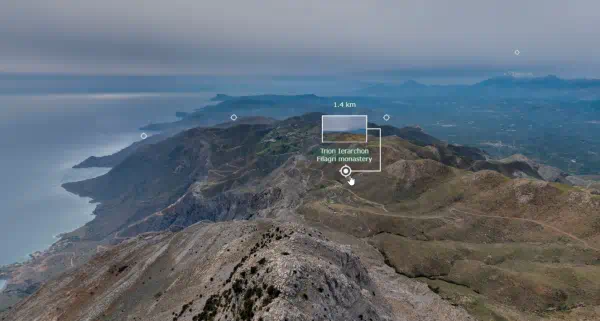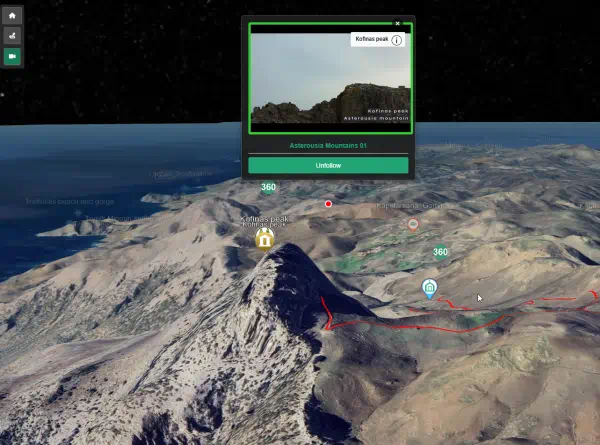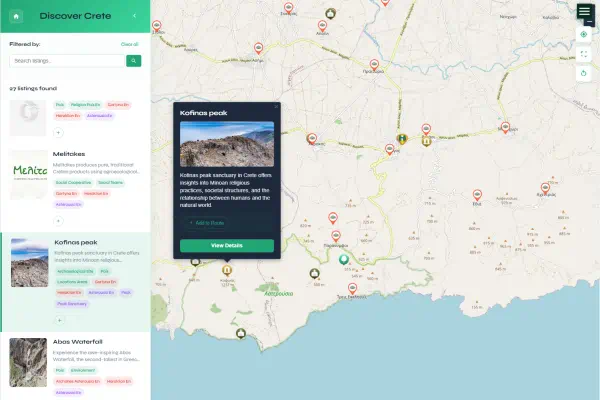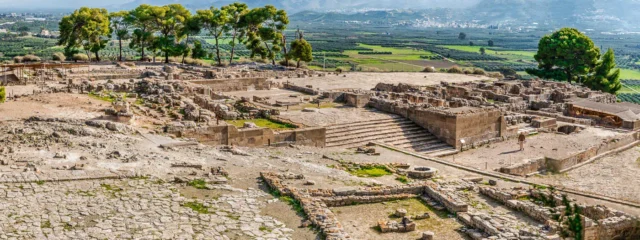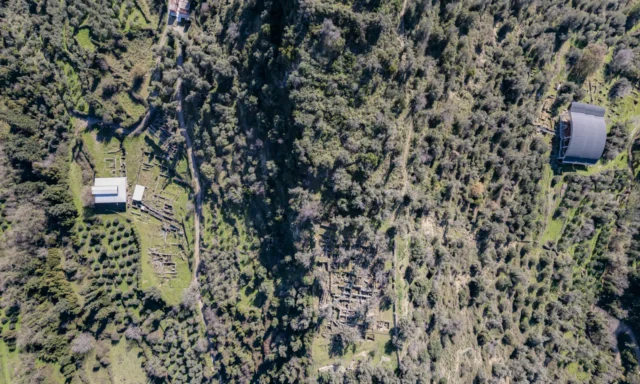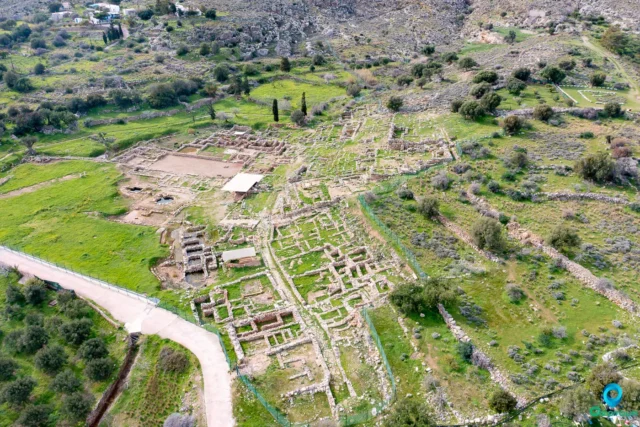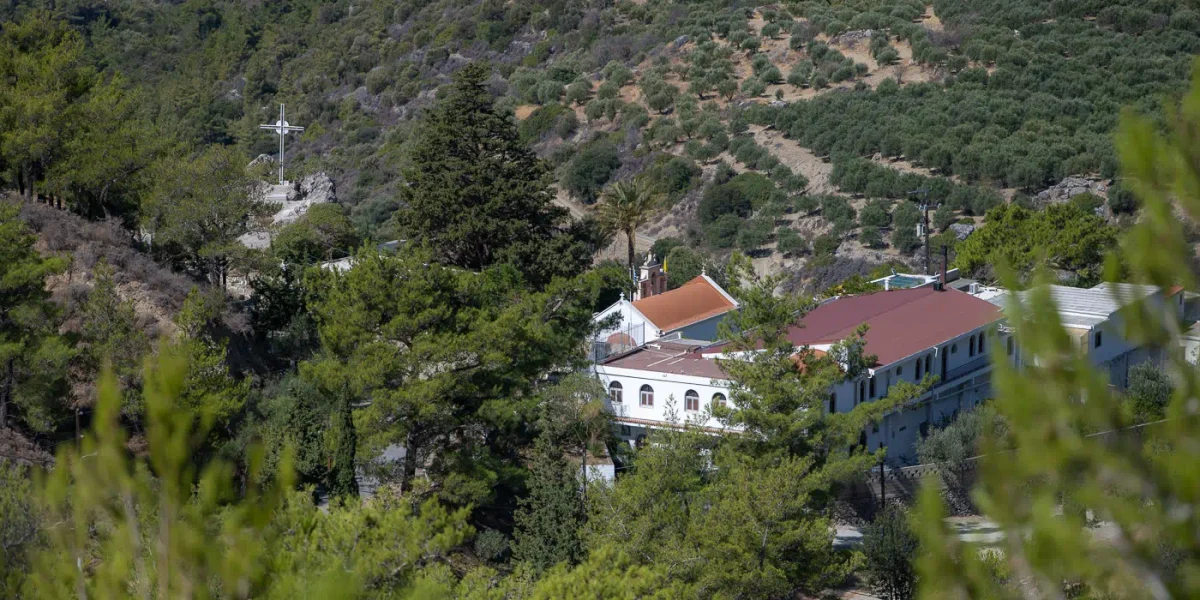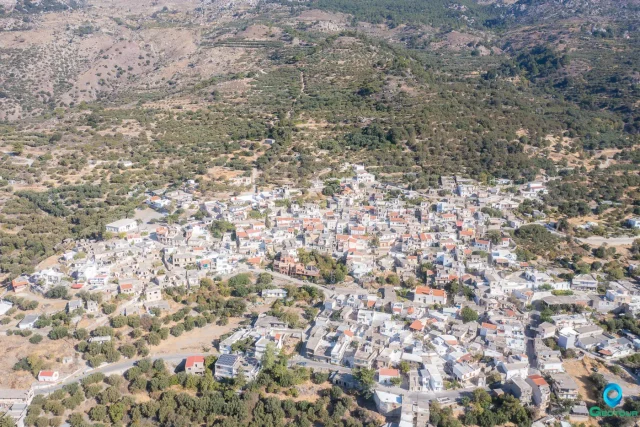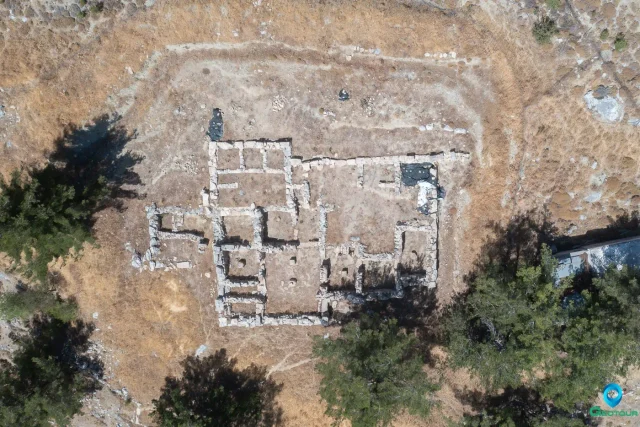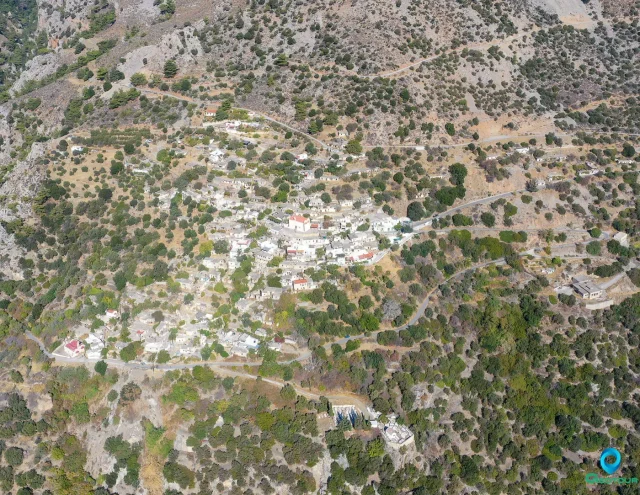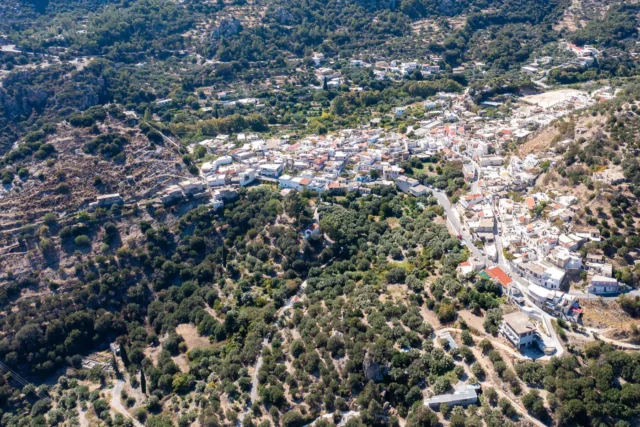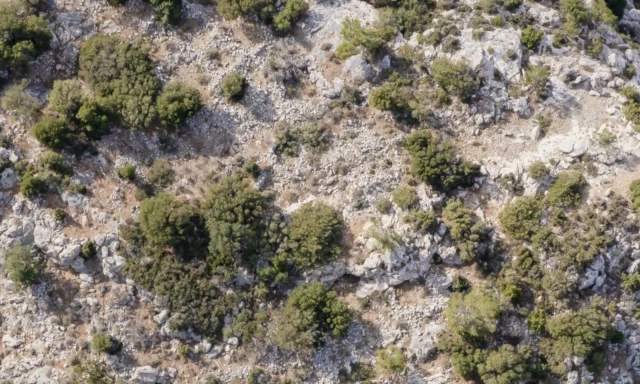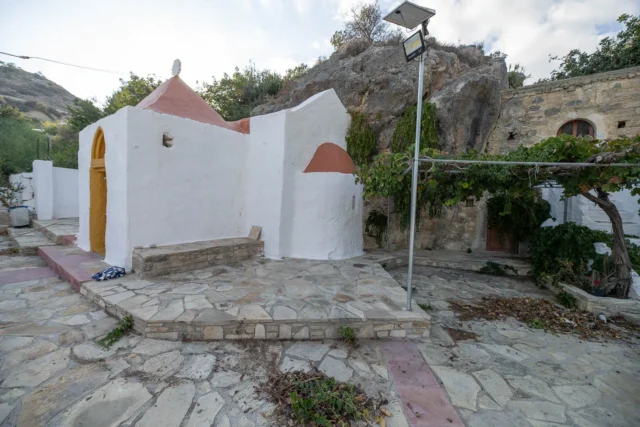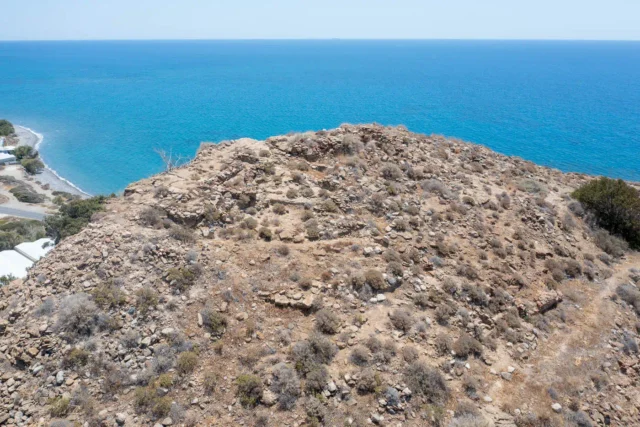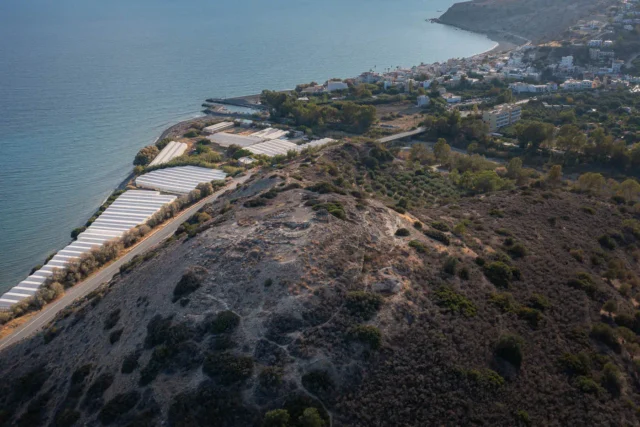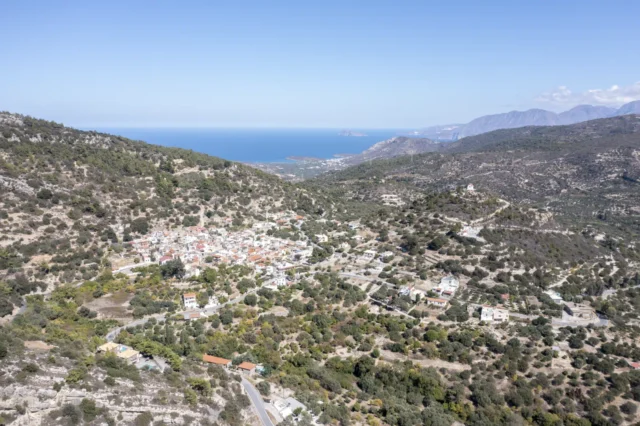Of the Holy Monastery of Panagia Exakousti is a convent located in the community of Malles, within the Municipality of Ierapetra in the Lasithi regional unit of Crete. It is situated at an altitude of 540 meters, approximately 24 kilometers west-northwest of Ierapetra.
History
The precise date of the monastery’s founding is unknown due to the absence of written records from the Venetian and Ottoman periods. Local tradition suggests the existence of an older monastery on the site, which was likely destroyed by Ottoman forces. What remained was a small natural cave, adapted for worship, which now serves as the chapel of the Transfiguration of the Lord.
The modern history of the monastery begins in the latter half of the 19th century with Antonios Barberakis (born 1837) from Malles. He became a monk at the Kapsa Monastery, receiving the name Ananias. After a period in Jerusalem, he returned to his birthplace in 1877 and settled at the ruins of Exakousti. He undertook the renovation of the monastery, beginning with the cave chapel and constructing a new main church (katholikon). An inscription at the base of the church’s bell tower marks the completion of this renovation on August 21, 1882. By 1881, the monastery housed eight monks and two lay residents.
The monastery was officially dissolved in 1900 under a law of the Cretan State, and its monks were transferred to the Faneromeni Monastery. However, it was re-established in 1903, and Ananias and the brotherhood returned. Ananias passed away on April 22, 1907.
The monastery faced another period of decline and was declared dissolvable in 1935. During the German-Italian occupation (1941-1944), its cells were looted and fell into ruin. A new period of revival began in 1961 when the monastery was included in the list of preserved monasteries. In 1963, Archimandrite Ioannikios Androulakis undertook its reconstruction, building new cells and installing water and electricity.
In 1976, the monastery was converted into a convent. The nuns completed the renovation work, adding an upper wing, a chapel dedicated to the Holy Fathers and Mothers, a library, a reception hall (archontariki), and workshops for weaving and tailoring.
Architecture and Features
The monastery complex includes the main church (katholikon), several chapels, and residential and auxiliary buildings.
The Katholikon
The main church is a single-aisled, barrel-vaulted basilica dedicated to the Nativity of the Theotokos (celebrated on September 8). The iconostasis is a notable example of woodcarving by local artisans from the Lasithi Plateau. While most of its icons are newer, created by the Heraklion-based iconographer Evangelos Markogiannakis in the late 19th century, two older icons of the Theotokos and John the Baptist are embedded to the right and left of the iconostasis. The Despotic Throne is also an older piece.
Chapel of the Transfiguration
To the south of the main enclosure is a small, cave-like chapel dedicated to the Transfiguration of the Lord. Originally a natural cave, it was minimally adapted for use as a chapel and is considered an “acheiropoietos” (not made by human hands) church. According to tradition, the icon of the Panagia was discovered within this cave.
Other Buildings
The northern and part of the eastern side of the enclosure are occupied by the monastery’s buildings. These include fourteen cells for the nuns, a guesthouse, a dining hall, a library, and workshops. A newer chapel in the northeastern corner is dedicated to the Holy Fathers and Mothers.
Key points
- Construction Period: The monastery was significantly renovated and reconstructed between 1877 and 1882 by the monk Ananias Barberakis. Further renovations and expansions occurred after 1963 and were completed after 1976.
- Location: The monastery is located in the community of Malles, Municipality of Ierapetra, in the Lasithi regional unit of Crete, Greece.
- Dimensions: The main church is a single-aisled basilica.
- Historical Significance: The monastery is a significant local spiritual center, revived in the 19th century by the notable figure of Saint Ananias Barberakis (Hatzis-Ananias). Its history reflects the broader trends of monastic revival in Crete following periods of Ottoman rule and its subsequent destruction and restoration in the 20th century.
- Current Status: The Holy Monastery of Panagia Exakousti is an active convent. According to the 2021 census, it is inhabited by three nuns. It operates workshops for textiles and tailoring and serves as a place of pilgrimage, celebrating its main feast day on September 8th.

